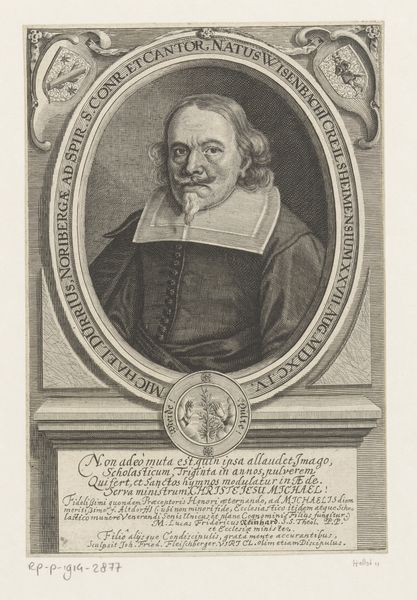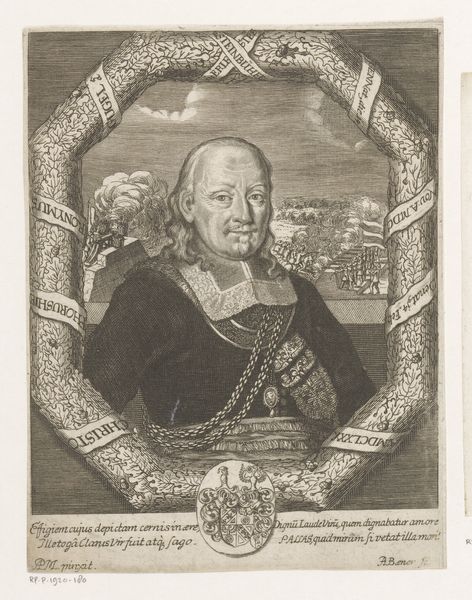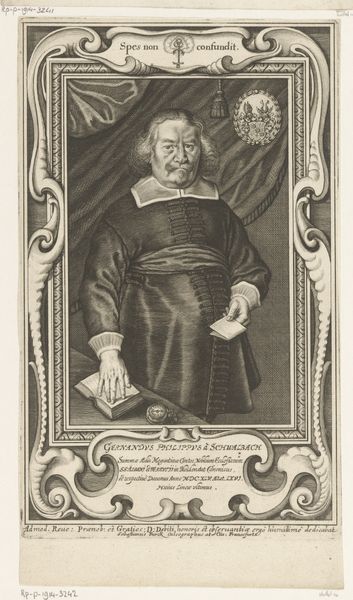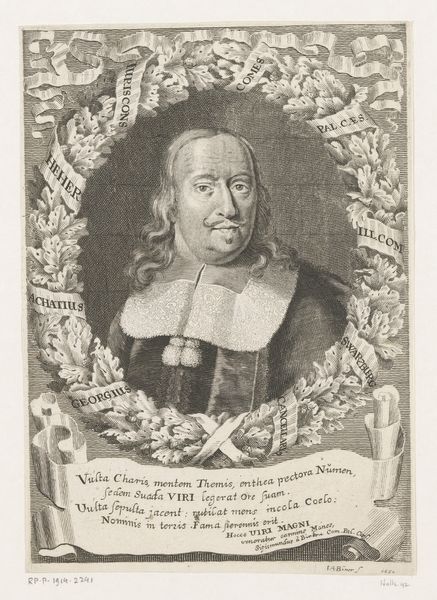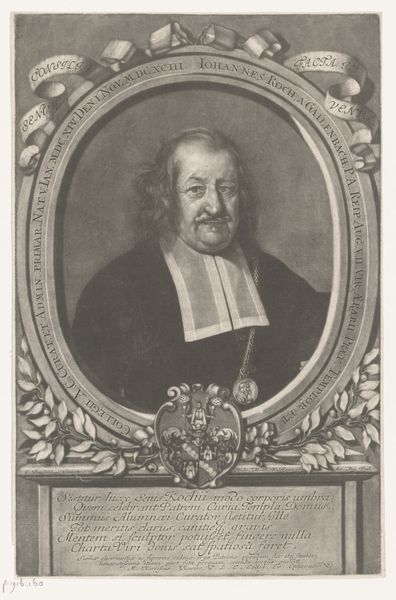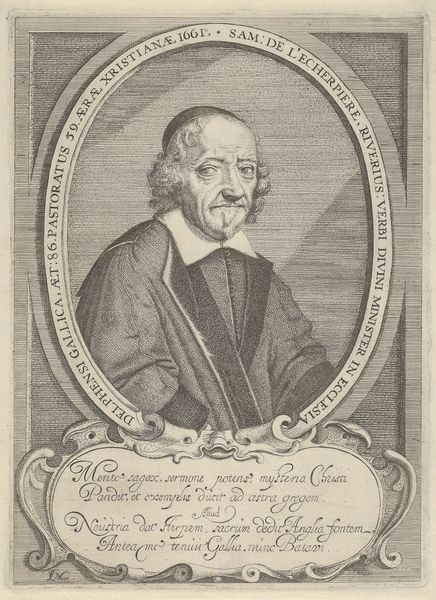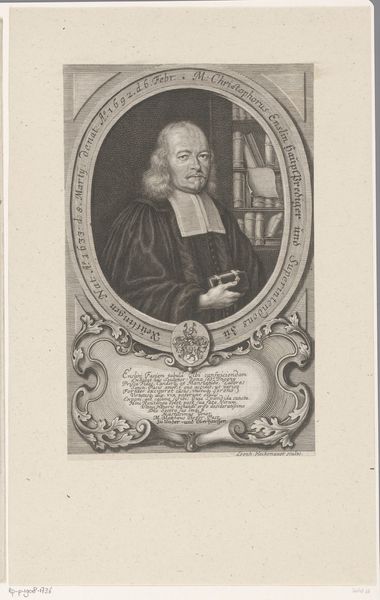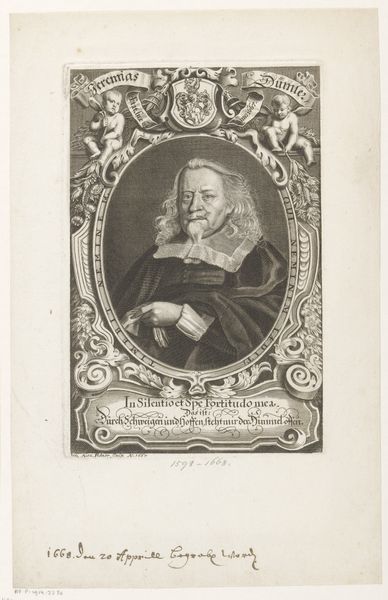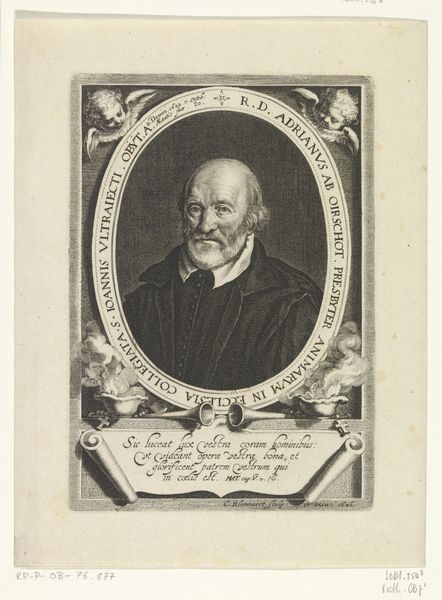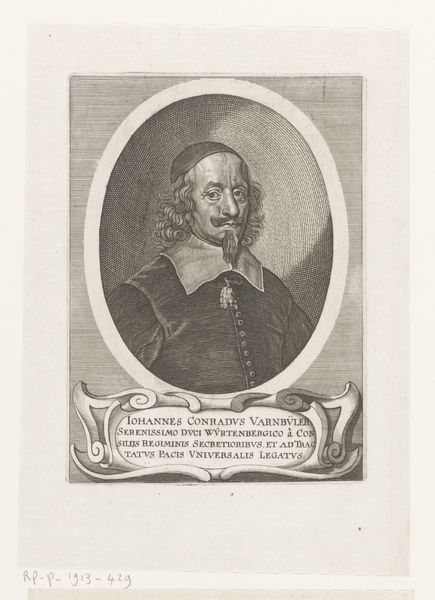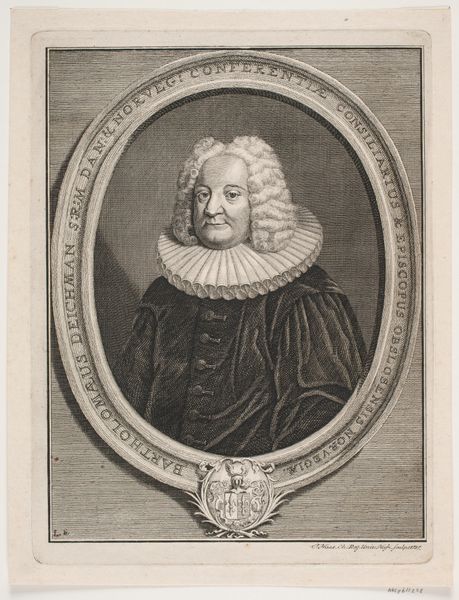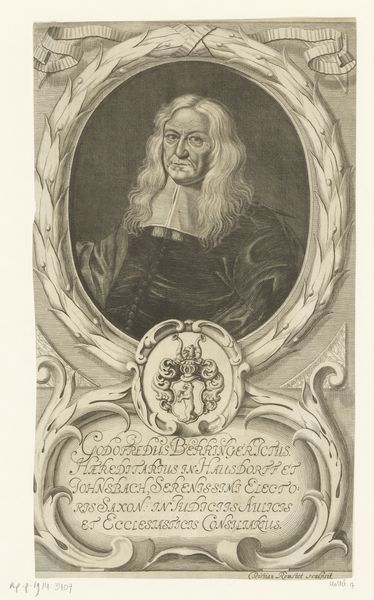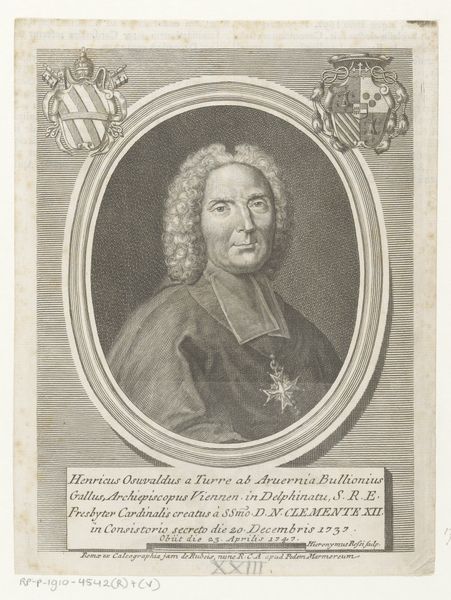
Portret van Jacobus Willemsen op 75-jarige leeftijd 1773 - 1775
0:00
0:00
antoinealexandrejosephcardon
Rijksmuseum
Dimensions: height 224 mm, width 177 mm
Copyright: Rijks Museum: Open Domain
Curator: We are looking at "Portret van Jacobus Willemsen op 75-jarige leeftijd," a striking engraving by Antoine Alexandre Joseph Cardon, dating from 1773 to 1775. Editor: My initial impression is one of age and gentle solemnity. The composition is very contained, framed, giving the subject a sort of scholarly interiority. Curator: It is important to note the context. This was a period heavily influenced by Enlightenment ideals, with an emphasis on reason and knowledge, which explains the portrait's almost severe directness and Jacobus’s very telling vestments. He presents not only as an individual, but as a pillar of the community and beacon of wisdom, someone intrinsically linked with enlightenment through religious reform. Editor: Yes, I see that conveyed through the stark lines of the engraving, its relatively monochromatic palette further focusing on texture and form—the delicate wrinkles around his eyes, the controlled chaos of his wig, contrasted with the crisp linen of his collar. Curator: Absolutely. The Baroque elements are evident but are downplayed. The artist focuses on imbuing Jacobus with an air of piety and learning, reflecting the shifting social and intellectual values. Even his clasped hands speak of someone deep in considered introspection. And that he has a study behind him, a collection of books. It is like his mind is open to us as well. Editor: Note the contrast. While there is an abundance of linear elements and cross hatching creating gradations of value, the background space actually has rather simple forms—flat shapes—so that the figure comes to the foreground of the viewer's experience. And speaking to your earlier points, while Baroque art can often be dynamic, emotive and overwhelming, this example here seems to convey a still stoicism of sorts. Curator: That quietness, to me, echoes a wider cultural movement. The questioning of religious doctrine—Willemsen, who was probably a religious leader, embodies the reformed ideals that attempted to integrate faith with logical understanding. He reflects a changed paradigm. Editor: This portrait does then really act as an artifact not merely showing us an older man in time, but one that expresses ideals during a time of significant shift.
Comments
No comments
Be the first to comment and join the conversation on the ultimate creative platform.
